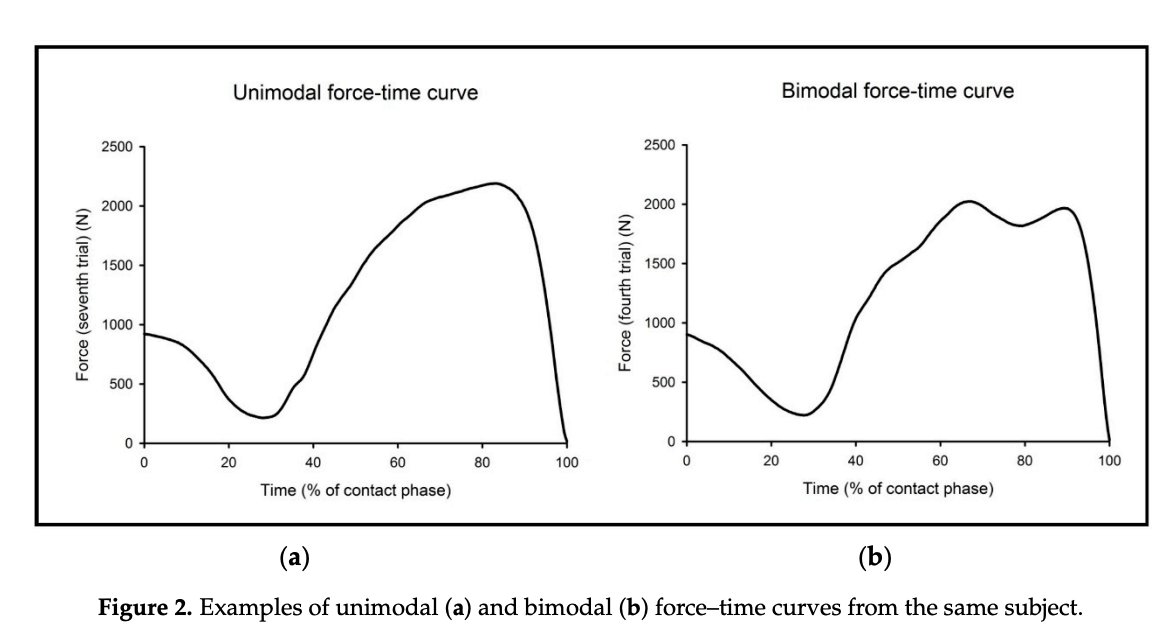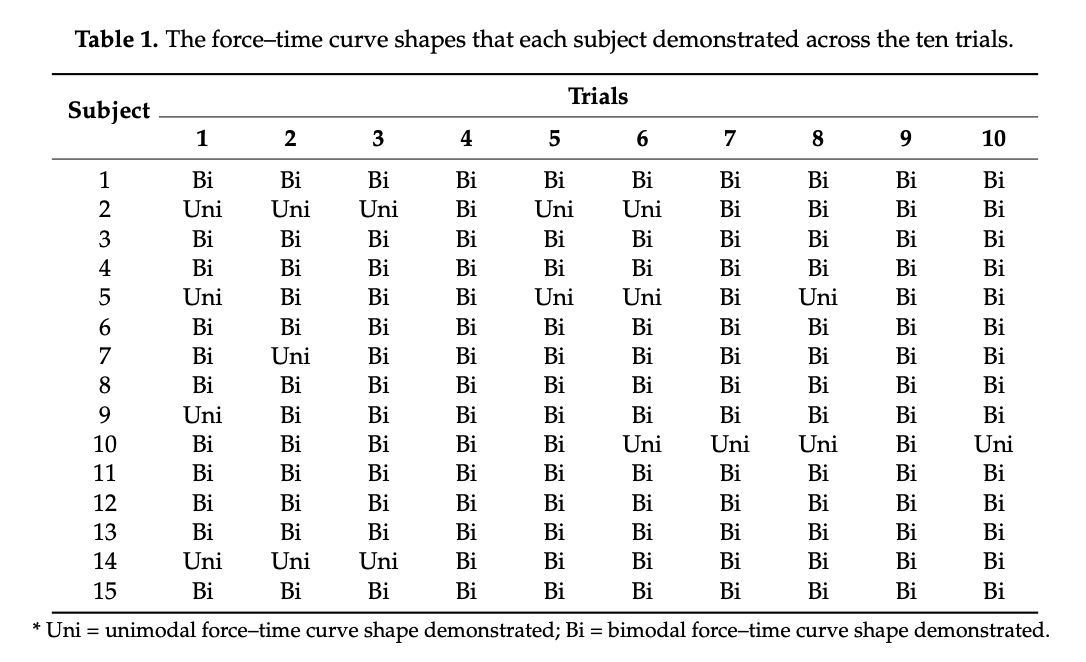The countermovement jump (CMJ) is a go-to tool for monitoring neuromuscular status in athletes.
Recently, more emphasis has been placed on analyzing the shape of the force-time curve, rather than just discrete metrics like jump height.
This study sought to determine whether an individual athlete consistently produces the same force-time shape across multiple CMJs.
Do athletes consistently produce a unimodal or bimodal force-time curve across repeated CMJ trials?

What Did the Researchers Do?
Researchers had 15 university-level male athletes across several sports perform 10 hands-on-hips CMJs on force plates.
Classification
Each force-time curve was visually inspected and labeled as either:
- Unimodal ⮕ one clear force peak
- Bimodal ⮕ two distinct force peaks
Assessed within-subject agreement over the first 2, 3, and 5 trials and all 10 trials to determine consistency.
What were the results?
Bimodal Curves Dominated
- Over 2 and 3 trials: 67% showed consistent bimodal patterns
- Over 5 trials: 67% still consistent with bimodal
- Over 10 trials: only 60% maintained consistent bimodal curves
Unimodal Consistency Vanished
- No subject was unimodal across all 10 trials
Curves Were Inconsistent
- 40% of subjects switched curve types across trials
Kappa values (an agreement metric)
- Across all trial comparisons, there was very poor agreement (as low as -0.216)

What Does This Mean?
- CMJ curve shape is not as consistent within athletes as previously assumed.
- Grouping athletes by average curve type could misrepresent individual strategies.
- Practitioners should analyze force-time curves individually rather than assuming stable jump signatures.
Coach's Takeaway
- Don’t assume athletes jump the same way every time, as the shape of their jump force-time curve likely varies trial-to-trial.
- Use individual trend data to guide technical feedback and performance tracking.
- Rely on the objective metrics rather than your eyes when you can.
Reference
Lake, J.P. & McMahon, J.J. (2018). Within-Subject Consistency of Unimodal and Bimodal Force Application during the Countermovement Jump. Sports, 6(143).




